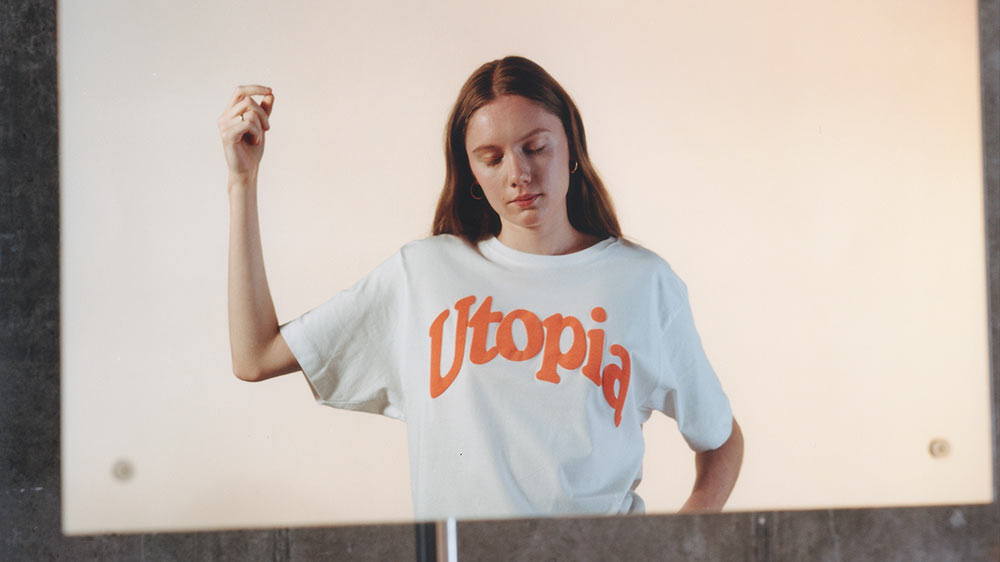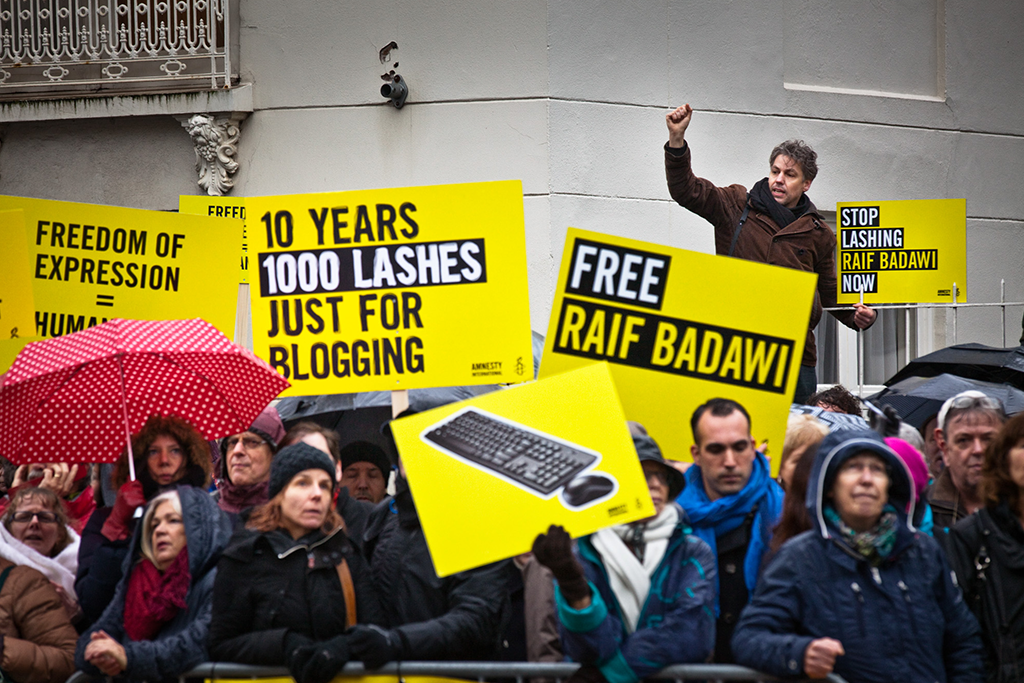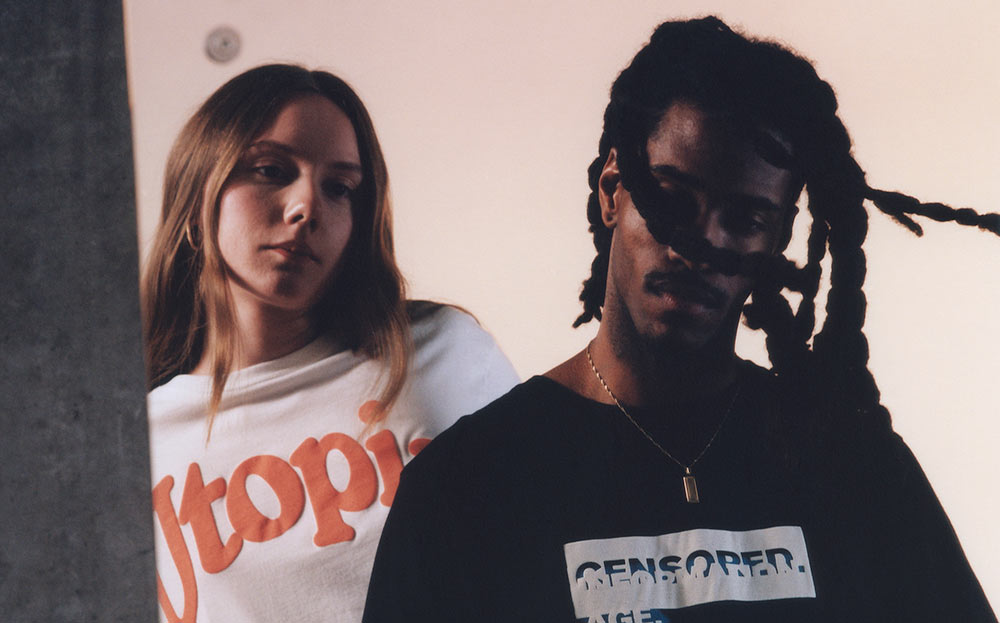
5 lessons from our major T-shirt fundraising charity campaign
Each year our 50/50 T-shirt campaign gives us the incredible opportunity to work with 50 global artists to produce a limited edition range of T-shirts, with 50% profits paid to the artists, and 50% to a charity. In 2018 the theme of 50/50 was ‘censorship,’ and our charity partner Amnesty International. The results? 2,000 t-shirts sold, raising over £13,000 for the world’s leading grassroots human rights organisation.
Running a project of this size and scale isn’t easy, but by following a few basic rules we’re able to maximise the impact and fundraising capacity of 50/50.
1. Collaboration is king
It’s a well-known fact that many hands makes light work, and herein lies the power of 50/50. By enlisting 50 artists to fight for a cause, we’re able to multiply our network, and our reach, 50 times over. That means 50x Instagram accounts, 50x networks of friends and family, 50x stories to shout about on our editorial platform.
When thinking about your own campaign, it’s worth thinking if there’s any way that you can expand your own network. Here’s some ways you can do it:
- Get a sample of your tee ahead of launching your campaign and take photos with a friend, family member, or key supporter wearing it. Not only is it great content, but you’ve also just earned another ambassador for your project. It’s likely they’ll shout loud and proud about your campaign on their own channels too.
- Collaborate with a designer; reach out to a designer (don’t know any? Just ask us…) and get them to help you with your design. This will make sure your design is amazing and give you another interesting angle to shout about from your campaign. Not to mention the designer is more than likely to want to share their work too!
- For bigger brands working on a charity-focused campaign, it’s worth digging through your network and looking for any influential supporters or brand ambassadors who may be willing to champion your cause on their own channels, helping you to reach new audiences.
2. Find a cause you’re passionate about
Censorship of the arts is something we care about at Everpress, indeed it’s been a topic of discussion at HQ long before we launched 50/50.
Once we decided that this was the issue we wanted to tackle this year, every decision from that point on had an added purpose. Straight away we knew we wanted to work with Amnesty International – they’re the world’s leading grassroots organisation fighting for global human rights – and we knew roughly what direction we’d take with creative and messaging for the whole campaign.

From beginning to end the project was a pleasure to work on because we believed in the cause, and we were able to highlight the importance of this to our extended community. Do the same, and you’ll see the benefits with your campaign.
Tip: Not looking to raise money for charity? The principle remains the same. Find the angle with your design or your campaign that you’re most passionate about, and find interesting ways to show this passion to your community. The rest will fall into place.
3. Put time and energy into making great assets
Our content plan for 50/50 revolved around 3 key periods of content creation; the ‘lookbook’ shoot (with models), the product shoot (flat shots of the T-shirts and designs), and the ongoing creation of teasers and social content. Why so much content? Well… good content sells T-shirts. Also, for a project the scale and scope of 50/50, we needed enough content to sustain us for an entire month, allowing us to talk about 50 different artists without it getting ‘samey.’

While it’s unlikely your campaign will be of a scope or size that warrants this many shoots, we highly recommend you make enough quality content to help you talk about your campaign in different, interesting ways. A few ideas:
- Teaser content from behind the scenes / work in progress content showing the process of making your design to build hype – “Coming soon!”
- Getting a sample of your T-shirt and shooting a friend in it is easy, and helps show your followers that the T-shirt is a real, tangible object that they can own.
- Find colourful, interesting backgrounds when posting your T-shirt mockups; avoid using a plain-white background (everyone does that!)
- Think about moving images of some kind; GIFs are great (and making GIFs with Giphy is easy)
- Video can be even better. Phones are brilliant these days, and there’s no excuses for not posting regularly to Instagram Stories, Snapchat and your main feeds.
4. Advertising
You would be amazed at how effective advertising on social media can be. For 50/50 we ran multiple advertising campaigns across Instagram and Facebook, helping us to sell many more T-shirts than we would have if relying solely on the organic reach of our social media channels.
Advertising can be daunting, but if it works, it’s worth it. If you are able to sell a T-shirt via advertising and retain a margin for profit on the sale, then it should be a no-brainer – you wouldn’t have sold the T-shirt otherwise, so you’ve made free money.
Tip: Start with a £10-20 budget and see if your adverts convert. If they don’t work then either stop them or try with a different image, video or message – but at least you tried! These are all learnings that will help you on your journey to understand what works for you.
5. Counting down is a must!
Nothing sells quite like urgency, and we used this to our advantage with 50/50. We made over 60% of our entire campaign sales in the closing days of the one-month campaign. Here’s a few tips for how to do it:
- We used Instagram stories heavily in the final days. The temporary nature of Stories means we can post consistently throughout the final days without fear of pushing ourselves too hard with our audience. This can be quicker content you’ve made on your phone that doesn’t need to be as polished as your ‘main feed’ content, which is an added bonus for those with limited resources.
- Put time into making dedicated countdown content. We made 3 videos for our main social channels to go out in the final days; one for 48 hours to go, 24 hours to go and 12 hours to go. We used clear messaging on the video outlining the time left, continuously building a sense of urgency, and always reinforcing the campaign message and why our community should support the cause.
- One thing to remember, is that as the campaign comes to an end, your shop page will automatically highlight, in red, the hours left in your campaign. This is great feature that helps build a sense of urgency with your customers, and ultimately helps convert to sales.
When running a campaign with so many moving parts it can be overwhelming and easy to lose track of what’s actually going to help you sell. By anchoring your project’s marketing to these key points you’ll have a strong framework from which to drive your campaign forward.


